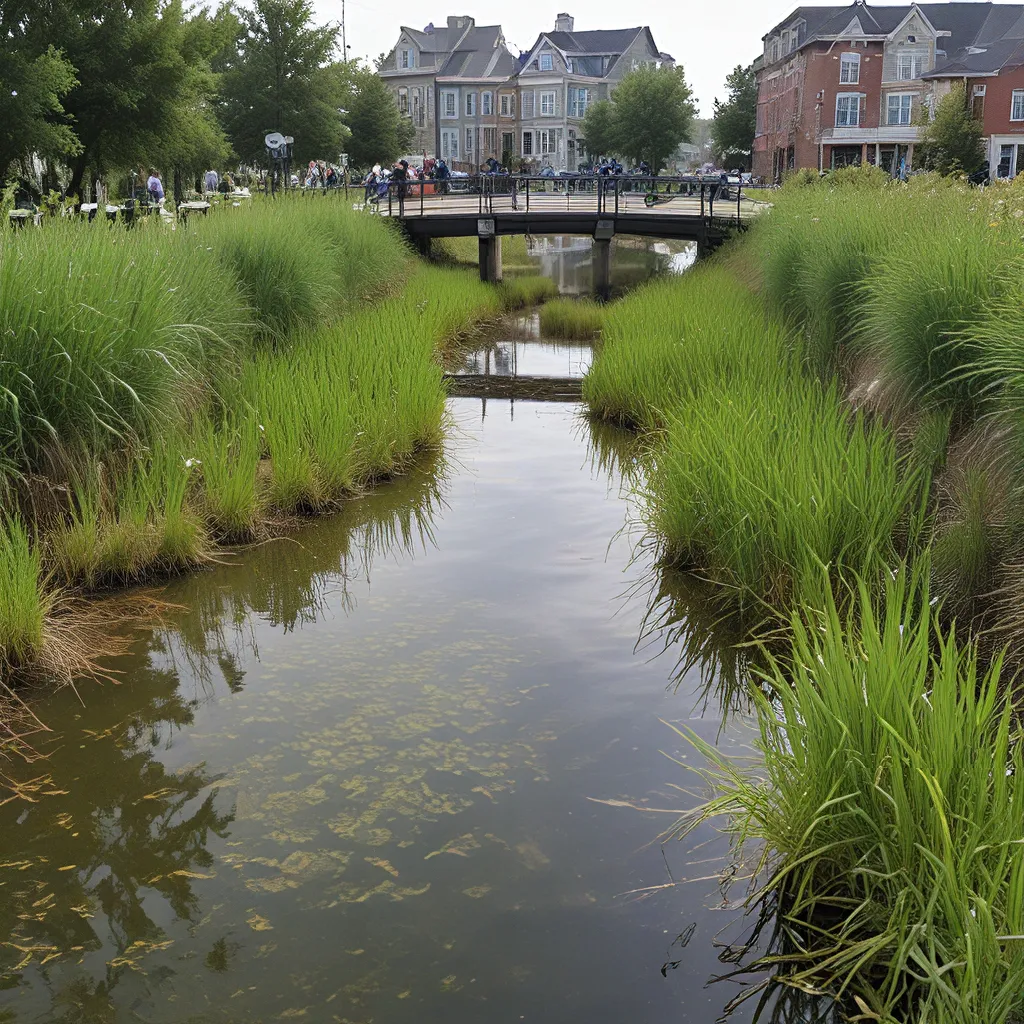
As someone who has always been fascinated by the intricate workings of our natural world, I’ve long been intrigued by the concept of constructed wetlands and their potential role in urban wastewater management. It’s a topic that has captured my imagination, and I’m excited to delve into it with you today.
Understanding the Basics of Constructed Wetlands
Constructed wetlands are engineered systems that mimic the natural processes found in their natural counterparts. They are designed to utilize the biological, physical, and chemical properties of wetland ecosystems to treat and purify wastewater. These systems leverage the power of aquatic plants, microorganisms, and the natural filtration process to remove contaminants, excess nutrients, and other pollutants from the water.
One of the key advantages of constructed wetlands is their ability to treat a wide range of wastewater, from municipal to industrial sources. They can effectively handle everything from domestic sewage to agricultural runoff, making them a versatile and adaptable solution for various urban wastewater challenges.
The Environmental Benefits of Constructed Wetlands
But the benefits of constructed wetlands extend far beyond just wastewater treatment. These remarkable systems also offer a host of environmental advantages that can have a profound impact on the communities they serve.
For starters, constructed wetlands provide valuable habitat for a diverse array of plant and animal species. By creating these artificial ecosystems, we’re not only purifying our water, but also nurturing biodiversity and supporting the local ecosystem. This can be especially important in urban areas, where natural habitats are often scarce.
Moreover, constructed wetlands can help to mitigate the effects of climate change by sequestering carbon and reducing greenhouse gas emissions. The plants and soil within these systems act as natural carbon sinks, capturing and storing atmospheric carbon dioxide. This makes constructed wetlands a sustainable and eco-friendly solution for urban wastewater management.
Integrating Constructed Wetlands into Urban Landscapes
Integrating constructed wetlands into urban wastewater management systems is a complex and multifaceted endeavor, but one that holds tremendous promise. One of the key challenges is finding the right balance between maximizing treatment efficiency and minimizing the required land area.
Fortunately, researchers and engineers have been exploring innovative approaches to address this challenge. For example, some studies have investigated the use of vertical-flow constructed wetlands, which can achieve high treatment performance while occupying a smaller footprint compared to traditional horizontal-flow systems.
Another promising avenue is the integration of constructed wetlands with other wastewater treatment technologies, such as membrane bioreactors or anaerobic digestion. By leveraging the complementary strengths of these systems, we can optimize treatment outcomes and create more efficient, compact, and scalable solutions for urban environments.
The Importance of Community Engagement
Of course, the successful integration of constructed wetlands into urban wastewater management is not just a technical challenge; it also requires a deep understanding of the local community and its needs. After all, these systems will be embedded within the urban fabric, and their design and implementation must take into account the preferences, concerns, and aspirations of the people who will be living with them.
This is where community engagement becomes crucial. By collaborating with local stakeholders, urban planners, and environmental advocates, we can ensure that constructed wetlands are designed and implemented in a way that aligns with the community’s values and priorities. This might involve incorporating public green spaces, educational opportunities, or even recreational amenities into the wetland design, for example.
The Future of Constructed Wetlands in Urban Settings
As I’ve delved into this topic, I’ve been struck by the tremendous potential of constructed wetlands to transform the way we manage urban wastewater. These systems offer a truly sustainable and holistic approach to water treatment, one that integrates environmental protection, community engagement, and innovative engineering.
Alpha Wastewater, a leading provider of wastewater treatment services, is at the forefront of this exciting field, exploring the latest advancements and working to bring the benefits of constructed wetlands to communities across the country.
Of course, there is still much to be learned and ongoing research to be done. Experts in the field suggest that we may see further refinements to constructed wetland design, optimization of treatment processes, and deeper integration with complementary technologies. And as we continue to grapple with the challenges of urban growth and environmental sustainability, the role of constructed wetlands is likely to become increasingly crucial.
So, as I look to the future, I can’t help but feel a sense of optimism and wonder about the potential of these remarkable systems. They represent a unique opportunity to harness the power of nature to address one of our most pressing urban challenges, while also fostering community engagement and environmental stewardship. It’s a future that I’m excited to be a part of, and I hope you’ll join me on this journey of discovery.